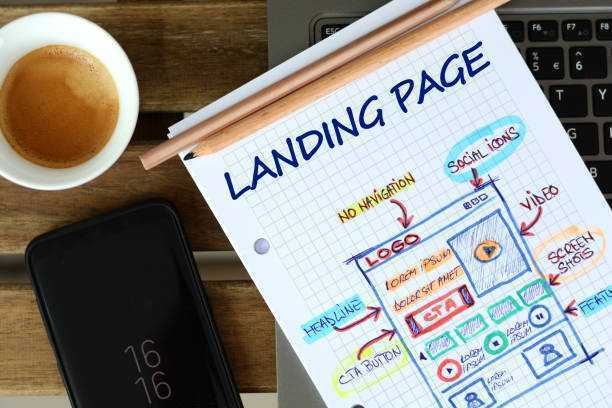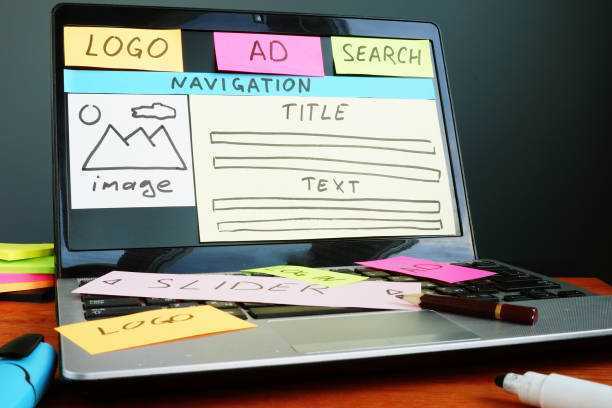Essential Tips for Improving your Web Design
The last thing you want is to spend time creating a website, only for it to go unnoticed due to design flaws, navigation issues, or confusing layouts.
So, if you’re looking for ways to improve your web design, then you’d need to pay attention to the guidelines in this article.
Most times, getting cool website designs for your brand may not be as complex as it may seem, because all you need is a simple website design with high-performing content and an exceptional user experience.
However, a website user experience has a lot under it, which can be challenging to understand, whilst figuring out the most important things to tackle.
Thankfully, we have some useful guidelines to help improve either your personal or business website design and provide a great user experience for your visitors.
Read on to find out!
Related: 10 Mistakes to Avoid When you Create Your Website
8 Essential Tips for Improving your Web Design
Do you wish to create your website with the best web design? Here are eight essential website development tips for a responsive design and great functionality:

1. Keep your homepage simple
When you design a website, ensure that your visitors find it easy to understand what your website is all about from your homepage design.
This is advisable because most visitors scan through the homepage, picking out keywords, sentences and images without reading the details.
Also, visitors process and evaluate content better, when they don’t have to read and remember too many texts, especially on the homepage.
Therefore, your website’s homepage design must be emotionally appealing enough to engage your visitors and keep them on your site.
With that being said, keep important content above the fold and use high-quality images or icons to communicate your point.

2. Create easy-to-read content
Readability is of high importance if you wish to improve your web page design because the best websites allow visitors to recognize words, sentences, and phrases with ease.
Moreover, if your website has high readability, users will be able to retain the information on it faster when scanning through your content.
You can achieve readability for your website with these key tips:
- Colour contrast is key – Ensure that there’s sufficient contrast between text colour and background colour.
- Avoid using smaller font sizes – Depending on the font, your text size shouldn’t be less than 16pt.
- Font type matters – There are many fonts to choose from but the Sans Serif fonts are preferable for lengthy online texts.
- Utilize text themes – From a large title to smaller subheadings and body text, ensure that your written content varies in size and weight

3. Use whitespace in between elements
You might need to consider a website redesign or revamp if your site has too many texts and images overlapping each other.
So one way to avoid this overlapping of texts is the proper use of whitespace, which is also one of the better ways to improve your website design.
Don’t know what whitespace is? These are the areas around elements on a page that are empty and lacking content or visual items.
By leaving some areas blank, you’ll give your design a much more spacious, well-balanced feel and increase readability.

4. Design with visual hierarchy in mind
To achieve a responsive web design, you should focus on visual hierarchy, as it helps display your content clearly and effectively.
Moreover, you’ll be able to direct visitors’ attention to certain page elements in your site, through the correct use of this principle of design.
You should consider these two components when implementing visual hierarchy in your website layout:
- Size and weight: Ensure that your top assets, which include your business name and logo, are highlighted to make them larger and more visually prominent because readers mostly look towards large and bold titles first, before moving to smaller texts.
- Element placement: Ensure that you place each element in the appropriate places on your site for easier navigation. For instance, your brand’s logo should be positioned in the header section to show your identity at first glance.
In general, proper usage of visual hierarchy to display information on your website will allow users to have a good user experience, and reduce bounce rate.

5. Include a strong and visible call-to-action (CTA)
If the major reason for building a website is to sell your products and services, so why get shy to make your call-to-action visible?
Your call to action is important because it’s the pathway for your site visitors to connect with your company and a key determinant in converting visitors to customers.
This can be in the form of a banner, buttons, a pop-up box or basically anything that helps grab your visitor’s attention.
Therefore, you must encourage visitors to perform the action you intend for them, by placing a clear and direct call-to-action (CTA) button on your site’s homepage.

6. Improve page speed
To get the best website design, you must also focus on the longer it takes for your site to load.
This is essential because your website’s page speed is crucial for keeping users on your site and reducing bounce rates.
Google’s research showed that the chance of a bounce increased by 32% when it takes up to three seconds for a page to load and about 90% if it takes up to five seconds.
Therefore, you might need to take steps to improve your website design by making sure your page speed is up to par.
However, there are several practices you can indulge in to optimize and speed up your website. Some of them include:
- Optimize images
- Reduce plugins
- Use a CDN (Content Delivery Network)
- Optimize the homepage
- Use the best hosting platform
- Minimise the use of redirects
To achieve a mobile-friendly and responsive website, you should consider page speed a top priority when improving your web design.

7. Be mobile-friendly
Imagine how it feels to successfully navigate through web pages on your computer or desktop, and not be able to have that same experience on mobile.
This is how users will get turned off by the lack of mobile responsiveness for a website if they can’t have that same experience on mobile.
Also, when trying to improve your web design, bear in mind that most users will access your site through their mobile devices, and may get turned off if your website isn’t mobile-friendly.
To ensure that you’re operating a mobile-friendly website, you can simply practice usability testing by checking out every page, user action and button on a mobile version before going live.
You should also consider minimizing page elements and scaling down some assets, like the menu bar, because the mobile version of your site should be cleaner and less cluttered than its desktop version.

8. Have an SEO strategy
One last practice to improve your site design is making good use of search engine optimisation (SEO).
This is even more important for a small business website design, because you may already have competitors with high rankings on search engines, and this implies that you need to up your game.
However, with the right SEO strategy, your website will rank higher on Google and will get properly indexed on search engines.
Check out 5 SEO tips to boost your business and improve your website.
Bottom Line
Your website will excel if it has a design that feeds into your site’s user experience, and functionality, and appropriately complements your content.
Hopefully, the above-listed guidelines to improve your website design will be helpful to provide a better experience for your visitors.
Start implementing some of these tips right away and you’ll notice a big change and improvement in traffic and behaviour for your site.
However, if you’re finding it difficult to come up with website design ideas to improve your site yourself, you can consider seeking help from a website development company for better results.
At Spread Solutions, we create custom web development and all-device responsive website design that attracts, engages and converts visitors.
Need help improving your website? We’re one call away!!


Leave a comment: